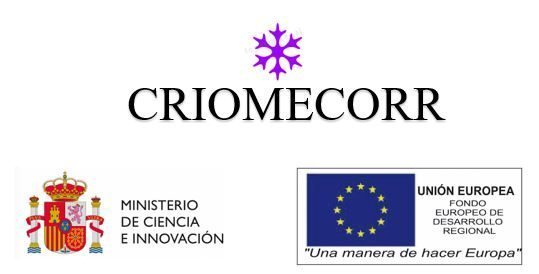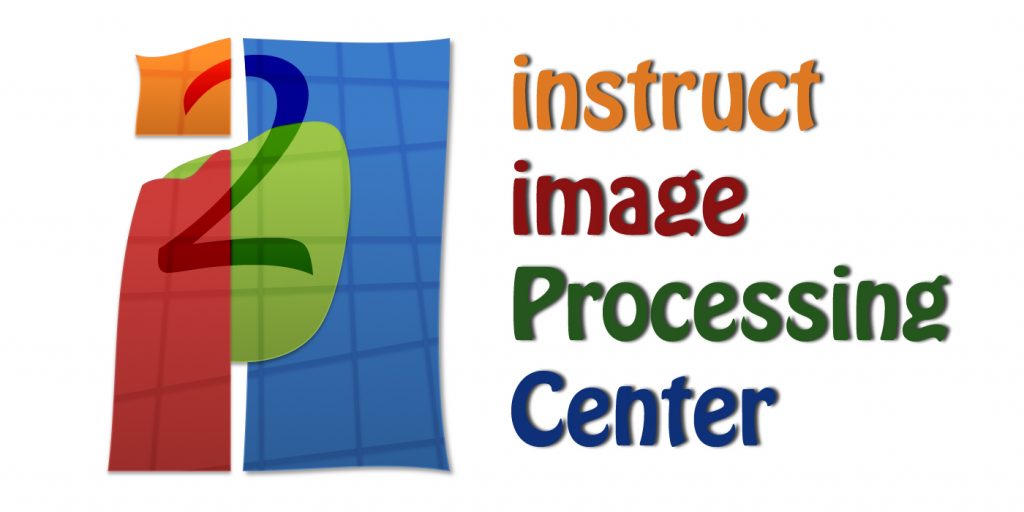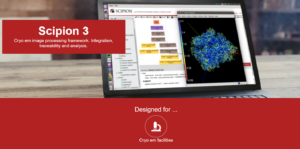VENUE
The course will take place in person at CNB-CSIC
December 13 – 16, 2022 from 09.30-17.30 CET
You do not need to install any special software to connect. A modern browser should be enough.
Overall aims and course outline
Cryo-electron Tomography is a rapidly growing technique that can visualize cell organelles and biological macromolecules in their cellular context. Image processing algorithms allow the identification of the macromolecules of interest in the electron tomograms. Then, by extracting small subtomograms around those locations and identifying those similar particles, we may average them and recognize their different conformations. This latter process is called subtomogram averaging and has allowed solving a growing number of macromolecules with a resolution between 20-5A.
The course aims at providing a comprehensive overview of the whole image processing pipeline in Electron Tomography (ET) from the movie alignment of the tilt series, 3D reconstruction of the tomogram, particle identification, and subtomogram averaging, all inside Scipion integration framework.
With the experience gained in the organization of virtual and in-person courses, we plan to organize this course in an in-person modality. 20 people will be able to physically attend.
The course is aimed at researchers of all levels wanting to adopt electron microscopy as one of the tools at their disposal for elucidating biological structures.
Expected impact for young researchers
CryoET is one of the most promising structural techniques, and it bridges the gap between structural and molecular biology and cell biology. Ph.D. students, as well as post-docs, will undoubtedly benefit from approaching this technique. Knowing it will open new doors to new positions worldwide.
Prerequisites
- You will need to bring a laptop with a modern browser
- We will provide machines with the required software through Amazon Web Services.
- a VNC client is recommended
- otherwise familiarize yourself with noVNC
- We will provide launch and coffee breaks
| Tutors: | I2PC: Carlos Oscar Sorzano Sánchez, Jose-María Carazo, Pablo Conesa, Federico de Isidro, David Herreros, Jorge Jiménez, Patricia Losana, Jose Luis Vilas, Borja Rodriguez, CryoEM CNB-CSIC: Francisco Javier Chichón, Jose Javier Conesa. Leiden University Medical Centre (LUMC): Abraham J. Koster Ramón y Cajal Researcher – Department of Information and Communication Engineering – University of Murcia: Antonio Martínez |
| Contacts: | Lead contact: Carlos Oscar Sorzano email. coss@cnb.csic.es Administrative Contact: Blanca Benitez email: blanca@cnb.csic.es |
Agenda
| DAY 1: From movies to tomograms | 9:30 Welcome 9:45 Course introduction 10:00 Tomography in Scipion 10:15 Import Tilt Series, automatic alignment 1:30 10 minutes break 11:40: CTF estimation and correction 13:00 lunch break 14:00: tomogram reconstruction 15:30 10 minutes break 15:40: Local Resolution and alternative workflows 17:30 End of session |
|
DAY 2: From tomograms to subtomograms. Picking and segmentation
|
9:30: Theory: Directional – Non-directional picking 9:50: Practice: directional picking 11:30: 10 minutes break 11:40: Practice: Non-directional picking (Cryolo) 13:00: lunch break 14:00-15:00: Tomogram denoising and membrane segmentation 10 minutes break 14:00-15:00: Tomogram denoising and membrane segmentation 10 minutes break 15:10-17:00: Particle identification: directional picking with PySeg and different strategies, particle filtering 17:30 Alternatives 17:30 End of session |
| DAY 3: Processing subtomograms | 9:30 Theory: Subtomogram averaging (I) 10:00 Practice: STA HIV tutorial (I) 11:30-11:40 10 minutes break 11:40 Practice: STA HIV tutorial (II) 13:00 lunch break 13:00 Theory: Subtomogram averaging (II) 14:00 Practice: STA Ribosome tutorial (I) 15:00-15:10 10 minutes break 15:45: Practice: STA Ribosome tutorial (II) 17:00 Alternatives 17:30 End of session |
|
DAY 4: Tomogram interpretation
|
09:30 – 12:00 Tomogram segmentation Basic use of SuRVoS for cellular tomogram segmentation and basic analysis. 3D rendering using ChimeraUSFC with masked data (FJCh, JC). Tutorial 12:00 – 12:30 End of course. Wrap up |
Registration Fee
Fill your registration here
(Online registration closed)
This course is funded by Instruct – ERIC, an Integrated Structural Biology Infrastructure for Europe.









